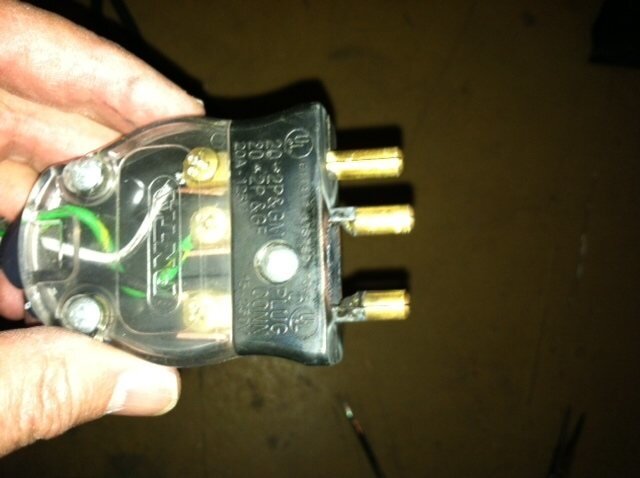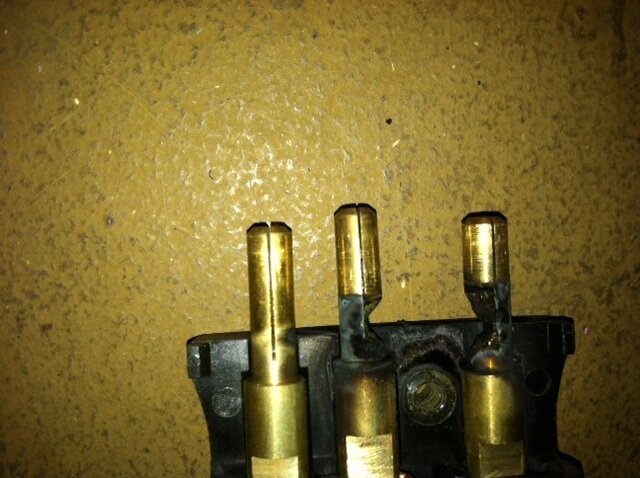JChenault
Well-Known Member
I had an interesting failure today. I'm trying to understand the physics of how it occurred.
I was doing some work and needed more light. I hooked up a 400Watt scoop and stuck it near my work space. Note that the scoop was not attached to a metal pipe, it was effectively sitting in a free air space.
After 30 seconds or so of use, I heard a loud arcing noise, saw sparks, and got some flames coming out of the pin plug. After what seemed like 10 seconds ( but was probably more like two) the breaker tripped and all was quiet.
I examined the plug and here is what I found.


Note that the arcing burned the ground and hot pin more than half way through.
When I put a meter on the fixture and discovered a short between the hot leg and ground ( not sure where that short is as yet as I need to take the fixture apart. I suspect that it is somewhere in the whip). I also discovered that the neutral in the male plug was not tightly connected.
Now I have no issue with the fixture developing a dead short between ground and hot. It does not happen frequently, but it does happen. My surprise and concern is that I got arcing between the hot leg and the ground on the pin plug. I am also surprised that the breaker did not trip sooner.
Anyone had a pin plug do this before? Any theories why I got such a spark between the pins?
I was doing some work and needed more light. I hooked up a 400Watt scoop and stuck it near my work space. Note that the scoop was not attached to a metal pipe, it was effectively sitting in a free air space.
After 30 seconds or so of use, I heard a loud arcing noise, saw sparks, and got some flames coming out of the pin plug. After what seemed like 10 seconds ( but was probably more like two) the breaker tripped and all was quiet.
I examined the plug and here is what I found.


Note that the arcing burned the ground and hot pin more than half way through.
When I put a meter on the fixture and discovered a short between the hot leg and ground ( not sure where that short is as yet as I need to take the fixture apart. I suspect that it is somewhere in the whip). I also discovered that the neutral in the male plug was not tightly connected.
Now I have no issue with the fixture developing a dead short between ground and hot. It does not happen frequently, but it does happen. My surprise and concern is that I got arcing between the hot leg and the ground on the pin plug. I am also surprised that the breaker did not trip sooner.
Anyone had a pin plug do this before? Any theories why I got such a spark between the pins?


